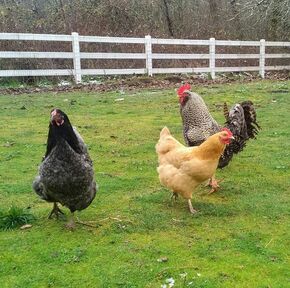 Do You Have Chickens? We have owned chickens for around 10 years now. We sure do enjoy the little buggers. The girls name every single one, love on them all, and then inevitably mourn their demise. They remember every single chicken, how it died, strange behavior quirks, and any weird eggs it laid. They remember even the ones that we gave away or sold. This year for 4H, they are wanting to do a project raising chicks to sell. In theory, this is a great idea. In practice, my property is being overrun by chickens! I have long since discovered that under 10 free-range chickens is a nice little flock of chickens. Over 10 free-range chickens is a marauding horde of chickens. It gets worse when you have roosters. The hens will stay within a few hundred feet of their house. Roosters, on the other hand, will roam long distances to the garden you just planted, or the mulch you just spread, and will take all the hens with them to feast on all those pretty little seeds and seedlings as well. Add in the deer and wild turkeys that come around, and you might as well not bother. 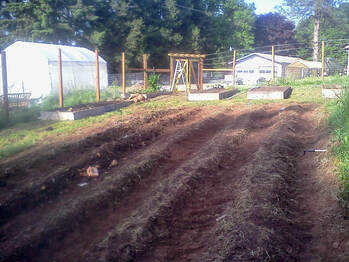 At our last house, we built a 7 foot fence. It kept the chickens out most of the time, and the deer out most of the time too. Last year, here at this new house, I planted a few dozen peas, half a dozen tomato plants, and a few peppers, garlic and onions. You know, you always start every gardening season with such hope! The deer kept the tomato plants trimmed down to about a foot high and the chickens pecked any actual tomato’s that had the temerity to try to ripen. They ate all the pea seed and scratched up the peppers. They also ate all the blueberries off our 8 plants just before they were ripe, and helped them selves to the majority of the grapes and huckleberries. Luckily, they didn’t eat the garlic and onions, just scratched around them every few days. I think the chickens knew that garlic is a main ingredient in chicken soup. Instead of killing them outright, they decided to torture them like POW’s in a concentration camp. Luckily, I was able to harvest a few sad looking bulbs at the end of the year. Sigh. My poor garden. Some dreams die hard. This year I told Josh I want a garden and that means the chickens need to be corralled. They will also need moved as they are exactly where I want to put my garden. He suggested selling them or eating them. The girls were livid. So we decided we would move them behind the arena to an about 10 ft x 50 ft space next to the orchard and fence them in there. The problem is, we have no coop. 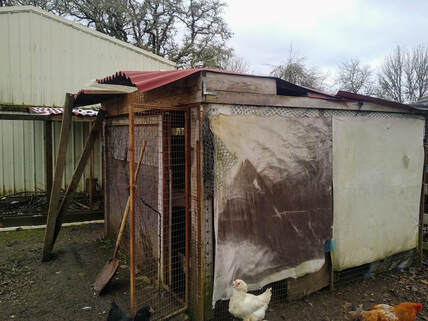 The chickens currently are living in a hovel left behind by the former owners of the property. It was built out of an old wire dog kennel, lined with tarps, some wood, and then a wooden frame was built over the top with some type of rubber roofing that is sagging and leaking all over. It is nasty, cold, and unsanitary. The complacent ones go into this structure at night. The suspicious ones roost in the trees directly next to it. Somehow they seem to think that they are safer from raccoons and other predators at night if they are out in the open. Or maybe they think the structure is nasty too. Who knows. Therefore, most nights Emma and I can be found out by the chicken coop with garden rakes and hoes, gently nudging their sternums until they step up squawking and scolding onto the rake and we are able to gently bring them down to eye level, then quickly whisk them off to the coop. Fishing chickens that are 10 feet up out of the trees is more of a balancing act than it sounds, especially when you are 5 feet up a ladder leaning with your gardening implement slightly to the left and around a branch to reach the chicken that has decided to roost just a bit higher than usual. Still, it prevents occasions where I am woken abruptly at 3 am, and stumbling out of bed, hair on end, no contacts, rush outside in my nightie and boots, broom in hand to try to rescue a chicken being attacked. It isn’t really a scenario I enjoy. Thus the fishing in the trees every evening. We are battling out whether or not to try to move the nasty structure, and re-build it in a new location (Josh’s idea), or to pour a concrete pad that is much more easily cleaned and build a shed/coop that actually will enclose the chickens and keep them safe, clean and dry (my idea). 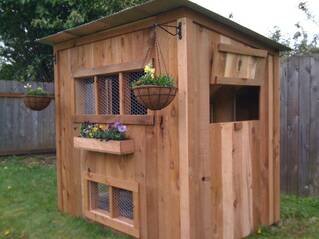 Every day I have been looking for Chicken coops on craigslist and other local buy and sell groups. Chicken coops are expensive! Someone is making a killing! Most of them are these cute little mini barn structures that will hold 2-3 chickens with a nice little 3 foot square run. Cute…but I would need at least 5 of them at $300 each for my 15 chickens. Some of them are “home owner specials”, much like the one we currently have. If I wrote the ad, it would go something like this: “We are offering an awesome deal! You can buy our built from old kenneling and scrap, falling down, filthy, tetanus infested maggot den for only $400. Can house up to 20 chickens. You disassemble and haul.” You get the idea. Finally, there are the beautiful perfect coops whose only major flaw is the $1500-$3000 they cost and the fact that we would have to rent a truck and a crane to move them. So while I have a major bee in my bonnet about getting the chickens moved to start my garden, it has become apparent to me that compromise is going to be key here. I told the girls that we might need to get rid of a few chickens for now (insert weeping and gnashing of teeth), so that we can keep the ones that we have more under control and healthier. I am still negotiating on the coop itself-maybe if we pour the pad this year and set up the nasty old structure on it, then next year we can build an actual coop?
0 Comments
Edited to update: IT WORKED! We had a confirmatory blood test. Chrissy is due sometime around May 19th! 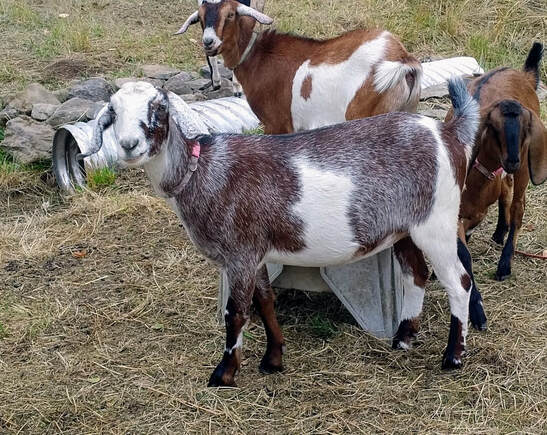 Way back about Thanksgiving time, before Christmas, Winter Break and the New Year, we started a process of treating our doe Chrysanthemum who seemed to be having trouble conceiving. She had been bred multiple times and still kept cycling into heat again. I did a bunch of research, and based on my research, it seemed likely she had a condition goats can get called cystic ovaries. So I called the vet, and got some meds to treat this. Here is what we did. We waited until 5 days after her last heat, and then gave her a dose of 2mL of Lutalyse IM to restart her cycle from day one again, then 7 days later, gave her 2mL of Fertagyl IM (I have also seen people use 1mL, or Cystorelin which is a different brand of the same stuff). I wasn’t joking around, so I used the full recommended 2mL to lyse or break up all the cysts we were speculating may have been the culprit in keeping her from getting pregnant, then 7 days later gave her 2 mL of Lutalyse IM to restart her hormonal cycle again, then 3 days after that, she came into heat, we put her back with the buck and gave her another 2mL of Fertagyl IM (I have seen some protocols that recommend 1mL, then another 1mL 24 hr later. I did the whole amount all at once). This protocol is said to have around a 70% success rate, although some animals do not take until the heat following this treatment. It is January now, so I am not sure Chrysanthemum has another heat in her. In this area, most goats stop cycling in January or February, with just a few going until March. 28 days and counting later Chrysanthemum has not come back into heat again that we have seen. Next week after we pass the 30 day mark we will do a pregnancy test (UBRL advertises they can do pregnancy tests on goats as early as 30 days. I have not done one this early before, but in this case I will because I am an anxious farmer). Here is the protocol I used: Day 0 (5 days after last heat) 2mL Lutalyse IM (prostaglandin) Day 7 2mL Fertagyl IM (gonadorelin) Day 14 2mL Lutalyse IM Day 17 2mL Fertagyl IM 30 days after breeding (47 days after the start of this process) Blood Preg test 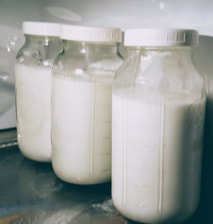 Now before everyone freaks out about the use of hormones in a animal that is destined to produce milk, I want to talk a tiny bit about what specifically each of these hormones do. They have a very short term job. There is no indication that humans should avoid milk or meat from animals treated with these drugs. As a matter of fact, the tests done on lutalyse indicate it does its job and is out of the body in minutes. Fertagyl also processes out of the body in a very short amount of time and there are no noted side effects from this hormone in the literature. In goats, technically, they ripen a new egg at what we humans consider the end of a cycle. During this time, the estrogen levels are dominant and eggs grow. These eggs mature in a fluid/jelly/mucus filled cyst or sack. This part of the cycle is actually really short, usually about 5 days. At the end of this time, the goat goes into heat, the pituitary gland produces a short burst of gonadorelin hormone, the follicle or the sack that the egg is growing in breaks open, releasing the egg to be fertilized. (this is considered the start of the cycle by humans, although by nature of it being a cycle, I don’t know if it actually has a start…) The gonadorelin also triggers the body to turn that follicle into something called a corpus luteum that produces progesterone to support a pregnancy, if pregnancy occurs. During that time, the goat’s body assumes it is pregnant because of the progesterone hormones being produced by the corpus luteum. As the cycle continues, if there are no implanting eggs, the body recognizes that implantation did not happen and releases a surge of the prostaglandin hormone that kills the corpus luteum, the progesterone level falls, the estrogen level increases, and the whole thing starts over again. In a goat with cystic ovaries, this system breaks down. Some speculate that it is increased fat around their organs keeps the eggs from moving in the system properly. Others think that there is a hormone imbalance that likely causes the cycle to not progress properly. There is some evidence of heritability of these issues. I am not really sure why, but ultimately, despite the body going through the estrogen and progesterone swings appropriate for a heat cycle, ovulation does not happen, or the eggs somehow get gummed up in the system. The hormones used by doing the above protocol do 2 things. The lutalyse (prostaglandin) kills the corpus luteum-that thing that is trying to hold together a pregnancy and keep the progesterone levels up. It says, “nope, your job is done. Restart the cycle”. It is a drug that is also used to abort does when unwanted pregnancy has occurred, and to induce labor in late term does when their gestation time is up. Basically, it tells the body, “stop making progesterone to support a pregnancy”. It is frequently used by people who practice AI with their animals to sync their cycle so they can have the correct timing for AI. But I should note, women should not handle this hormones without gloves, and pregnant women should not handle it at all. Also, people with asthma should be extra careful, because if they somehow ingested a significant dose it could cause an asthma attack (asthma can be triggered by too much prostaglandin). The Fertagyl or Cystorelin (gonadorelin) is kind of the Yin to the prostaglandin’s Yang. It tells the body to release the eggs, break open the follicles get those suckers out, and to turn that follicle into a corpus luteum to support pregnancy. So in theory, in a doe with cystic ovaries, where all the follicles have been growing but not releasing the eggs, or they are releasing but then the corpus luteum is not forming to support pregnancy properly, the fertagyl communicates with the system to get it back on track. The reason you do the protocol twice from my understanding is that you want to get all the old icky eggs out (lyse all the cysts), then give the body some time to reset and grow new eggs. Then get it to release those nice fresh eggs. In a case of AI, they do this twice to make sure there are mature eggs released just at the right time to get fertilized by the sperm from the AI process. It requires specific timing. So there you have it folks. Hormone therapy in goats made simple. We will see if this actually worked or if I am tilting at windmills here next week! 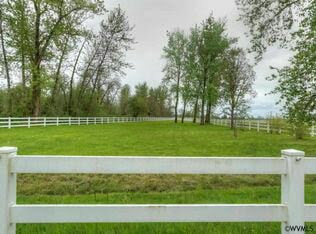 I read an awesome article today. You can read it over on https://www.thesimpledollar.com/from-the-scarcity-mindset-to-the-abundance-mindset/ . His second tip was about organization as a tool for recognizing abundance. He says, “The simple process of getting your possessions, your time, and your information better organized does a lot to cultivate an abundance mindset. By doing this, you begin to see how many things and how much time you actually already have in your life.” This is something that Josh and I have been talking about a lot over the last 2 years, as it appears to be something that is particularly difficult for us. I have some theories on why that is, but ultimately understanding the reasons is only partially helpful in changing the thinking patterns. Over and over, though, we have found that when we approach our lives with an attitude of thankfulness and abundance, instead of overwhelm and fear, we are much more joyful. Success follows naturally from joy. So today, from an attitude of abundance, I wanted to share with you some of the items on what we have dubbed our “Never-ending List”. If you are a homesteader, you know you have one. We wrote ours fall of 2017, shortly after moving in. As time has gone on, we have crossed things off and added new things. Sometimes it is hard to remember that for every item on this list that is undone, we have many other things that are thriving. From an attitude of abundance, I want to look at our accomplishments this last year. I hope that by recalling them all, I can spend more time in thankfulness. Here were things on the list we were able to check off in the last year. This is pretty impressive, guys!!! 1. Make or buy goat hay feeders for barn and field. We made them. They broke. We reinforced one and bought another. PROBLEM SOLVED. 2. Fence in the back field. 4 boys ages 12-16, a week of work, some money spent on gloves, wire, field fencing and a bunch of food later-wow those boys can eat! And the deed was done. Those boys are highly motivated by friendship, food, and cash! 3. Move rocks. We had a huge eyesore of a broken water feature that was built with about 200 boulders. This chore is 90% done, mostly as a way for kids to earn screen time or treats. (“move 10 big and 10 small rocks and you can have half an hour of screen time” works really well) Once the last few rocks are done I will be planning a really fun kitchen herb garden in that space, but I have to figure out the dog pee problem (the dog really likes to pee right there, and call me picky, but I don’t particularly want dog pee in my food). 4. Put cat food lid on bucket. This was a bigger achievement than it sounds. I got some really cool screw on Gamma bucket lids for animal food at our local Winco. They have a better price than Amazon. They work excellently on 5 gallon buckets. The animals cannot get into them, and they keep the moisture out. I keep all our animal feed except the chicken feed in them now. I wanted the 2 gallon size for the cat food bucket, and bought some, but the kids and I could not get that sucker snapped together. This is why this made the list, because I needed help. :D Josh got around to it about 2 month later. Ahhh. The little things!! 5. Fix leaky faucets. There were 3. They ended up being beyond what Josh was able to fix. The plumber had to be called. It cost us $1300. I hate stuff like that...BUT...we had the $1300!!! There was a time in our life that we would not have had the money. And the plumber coming out lead to the discovery that our well was not functioning properly. We knew our electrical bill was high, but the well malfunctioning alone was costing us $100-$150 a month more in electrical, which lead to us replacing the well motor, tank, piping and now we are saving significantly on our electrical bill. I think we will break even in about 4-5 years, and the well should last 20. 6. Hem curtains in parents room. Because, well, they dragged. 7. Prune bushes-done last year. Due again, and I am excited because now seeing how everything grew over the year, we will do some things the same and some differently. This is what it is all about guys. The learning! 8. Add goat pen in barn. When we got the place, the barn was gutted except the roof supports. Over this year, not only did josh build me one pen like I had on the list, he built me 4, plus a feed storage area, plus he is now working on my milking/medical area!!!! Talk about abundance!! 9. Clean chimney. It is weird that such a simple thing can be so daunting. But we did it. The last time I had a chimney cleaned, I paid someone $200 to do it. This time, Josh and I watched a few you-tube videos, climbed on the roof and did it ourselves in about 30 minutes. Seriously worth the 10 minutes watching you tube and the $20 brush!!! 10. Finish removing/burning out rhodies. If you have rhododendrons you know they are really pretty. Especially in spring, and the ones on this property were real show stoppers. But if you have any experience with goats you know… NOPE!!! (see more about our experience with Rhododendrons and goats HERE) So they had to go. I think we had about 10 on the property. We cut them all out and burned them. I will be adding in other plants in those spots eventually. Right now there are big holes in the landscaping, but it is worth it for our peace of mind! 11. Move compost around and tidy raised beds. Turns out with chickens this is a never-ending battle. We checked it unconvincingly off the list. I think it really is best if it stays off the list until the chickens are corralled. 12. Reinforce bridges across ditches. Not only did we reinforce, we found a guy on a buy and sell group who was selling an 8 foot long 12 inch culvert for cheap that we were able to place in one of the ditches and fill with some of our extra stones, creating a bridge that is strong enough to drive the car and trailer across!!! Win! The other bridge we may still replace eventually, but this was the main one we were worrying about. This will allow us full access to the field with the truck and trailer. 13. Burn weeds out of driveway…Well I think the weeds and I are going to have to live in harmony for a while. We burned ‘em once, they grew right back, I am not to the point of being OK with using Round-up on them. 14. Get wood. We have had wood come to us a few different ways now, and so far have avoided paying for it. I am not sure how the future is going to look but having the ability to heat our house with wood is saving us a lot on the electrical bill! Stacking wood is a great consequence as well as a great extra chore for those who want to earn screen time. 15. Get pallets. Does every homestead have weird stuff built with pallets? They do sure come in handy! 16. Replace dishwasher. I want to take a moment to call out the awesomeness of a dishwasher that works. I realize this is a first world problem, but sometimes I am really bummed out by having to do dishes, and I forget that I am so blessed! We love the dishwasher we got. It has a cycle that allows us to sanitize our jars for milk, and it allows for kids to do dishes and not always rinse well. 17. Put shelter in field. We got a steal by upcycling a box that used to be used for recycling newspapers. That took care of one field. Good enough for now! Guys, I am tired just thinking about all we did this last year!!!
This list also did not encompass dozens of things we did that were not on the list, things like finishing moving in, cleaning and organizing the office, shop and garage, building new raised beds, painting the dining room and the office, repairing gates, repairing the pump house roof, etc that were done but never made it on the list. It did not include countless hours of parenting, extracurricular activities for the kids, animal husbandry, doing household chores, and working at our day jobs. I love getting stuff accomplished, and I am sure I will make loads of progress in this coming year on things too, but for today, I am going to rest on my laurels. I want to remember to be thankful for the journey we are on and the abundance I have all around me, even when I don’t remember to see it! Stay tuned for an article on what the Never-Ending List has in store for us for 2019! What is on your Never-Ending List? Having just moved, we did not do a vegetable garden last year. This is the second year in a row that I did not get a garden as I didn't have good gardening space in our rental. I have dabbled somewhat in the flower beds, planted a few herbs, and moved some pots around, but nothing I would call serious gardening. I have missed it so much! There is something in my soul that is touched by gardening in a way that nothing else touches it.
This fall, as a 15 year wedding anniversary gift, Josh built me some beautiful raised beds and has promised to install them wherever I want. I can't wait to start gardening next year! The plan is to take one of our paddocks, and put the raised beds along the south edge. I will make a general "in ground" garden area in the middle, and then hopefully we will eventually plant things like Kiwi or another vining perenial on the north side fence. Where the chicken coop is now is where I am hoping eventually to have my green house, and in the back we will keep the fire pit with a small green area around it. Josh loves apple trees and we will plant one or two in corners where they won't shade anything we don't want shaded. I am so excited to watch our garden dreams come to life! Well guys, it is a new year. 2018 was a wonderful year for us! It was a year of holding our ground and of strengthening within our family. It was a year of spiritual growth for Josh and me, and of new experiences and learning for all of us. Despite almost 10 years in this lifestyle, for everything that I know or think I know I find there are another 20 things yet to learn. Today in the spirit of the New Year, I wanted to take the time to talk about what has been, and the path we want to travel this year. Last year was a year of many firsts for us. On the school front, we went from homeschooling to a charter school situation for the kids. I am so thankful for how our children are thriving in this new venue! We attended OSU’s Small Farm classes and learned a little about a lot of subjects related to farm management. On the farm, we had our first goat babies. milked for the first time, learned about goat health and how to draw blood and drench goats. We sold and bought goats. We learned about conformation, pedigrees and registering animals. We learned about healthy diets for the different livestock on our property, and we worked to improve our own diets too. We joined 4H, had our first year of county fair and what a wonderful experience that was! We built fences and stored hay. We started planning our garden. We kept up (sorta) on the yard work and property maintenance. We learned a lot about husbanding our property and livestock. 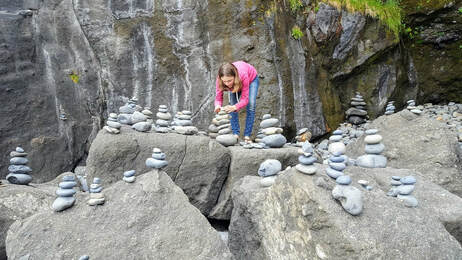 Through this all we learned about the importance of being true to who we are without shame. We bonded as a family, and we explored new avenues of growth as a family and individuals. We did not focus nearly as much as other years on mushrooms, herbs, fishing and hunting. And that was OK. We gave energy to the things that were calling for it. So what does the future hold? I am hoping and praying that my work will go to 12 hr shifts, allowing me to go down to a 2 day a week work week. That would be such a huge blessing to all of us! Josh is continuing to explore options to get out of the drywall world. I am hoping for the kids to finish the school year strong. They go to a wonderful school with involved families and dedicated teachers. In the tail end of 2018, I was not as involved with the PTC activities as I wish I would have been, so I plan to improve that in 2019. I would love to attend some continuing education in essential oils and herbs, and then hold some classes for my doTerra team. 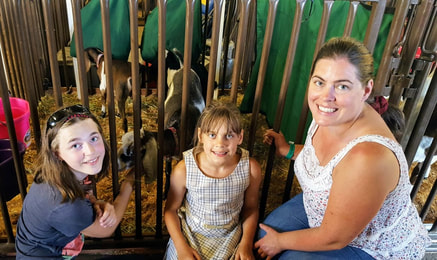 We should have goat babies on the ground starting in March. I plan to sell most of our 2019 goat babies. We will milk and do at least a one day milk test. This year I am hoping we have enough milk for it to continue to be worth milking the full 10 months. I know it is cliché, but I want to learn to do things like make soap and lotion with our milk. Wyatt is emotionally so strong and is planning to do a meat goat for 4H this year. I am sad about it already. It is hard to imagine raising such beautiful intelligent animals to butcher, but such is the life of a farmer. The chickens have got to be corralled or go! In 2019 we will either get rid of all our chickens or build them a much more stout coop and run. They are making a mess! We are planning to put in at least a small garden this year, and I want to continue improving my herbs and flowers in my flower beds. We have a big list of things to do to catch up maintenance. I have once again updated our “never-ending list”. I crossed a few things off, and added a few things. Most urgently, the hot water heater started leaking and the barn door is breaking. There is just so much to do! We continue to explore the idea of raising some carefully selected litters of dogs for pets and as bird retrieval dogs. It is still a little bit of a moving target because our plan is evolving as we learn more about hobby breeding and what it entails. We do plan to get at least one dog in 2019 that has potential as a bird dog and a breeding animal. Although I have spent a large chunk of my free time the last 6 months researching what it takes to be a wise, reputable hobby breeder, we are still a way off from pulling the trigger on this plan. We are working on a timeline. Aspects of the preparation will definitely happen in 2019, whether or not we will have a breeding program off the ground in 2019 is still questionable.  Lastly, but most importantly, both Josh and I feel strongly that it is so important to continue to grow our relationship with our children and one another, to foster spirituality, health, independence, and interdependence. We are working towards new family ground rules more appropriate to the current ages and stages of our children, and encouraging them to try new experiences. We have a few great books on our read list for this year. We plan to continue to work towards healthier living. My hope is that all of these things will foster and lead up to a greater ability for flexibility for us financially as well as with scheduling. By the end of this year we want to have a solid plan and have made beginning steps to pay off the house within 5-10 years. I am so excited to see what the new year holds. If our experience has taught us anything, it is that we will only achieve part of what we set out to do, but will achieve many other things we had no idea were in store for us yet. I am excited to see what this new year brings! I would love to hear what the New Year has in store for you!!! Please comment below! When you think of a dog breeder, what do you think of? Lately we have been considering starting to breed a few high-quality dogs, and I have been surprised by the amount of hate people have for breeders.
To be honest, I am a little daunted. Apparently anyone who does not rescue mutts or who breeds for any sort of a profit is a monster. We are not monsters, so the question is, why would we want to do this? When we bought our property, we bought with the intention that we would do something to partially help pay for it. We could see potential to use this place to do some good in this world. Over the last 1 ½ years we have considered dozens of ideas of how to make money and discarded them all after some consideration. We have come back over and over to the idea of raising some dogs. I love babies and birth, and Josh loves the idea that we could provide healthy happy dogs to families. We also have tossed around raising dogs to sell as service animals and possibly training dogs for bird retrieval. We live in a perfect place for any of these possibilities. Here are our most important rationale. We love dogs and have a beautiful space for them to run and play. We have children who love dogs and will give them plenty of attention. We have enough resources to take good care of the breeding stock. We also have good mentorship from a couple of other hobby breeders in the area to make sure we don’t mess anything up too badly. Additionally, I have a great interest in genetics, avoiding disease and feeding healthfully, so I feel we can successfully breed animals that are healthy and a huge asset to their future owners. I feel I could bring my customers a very good value. But seriously, the hate!! Much of what I have read about the hate for breeders stems around the idea of puppy mills, places where the emotional and physical needs of the dogs are not met and no one cares about genetic defects. I totally understand this! Although we have had a couple totally legit dog breeders advise us on how we could convert our barn into a kennel, I am still completely uncomfortable with keeping dogs that are kenneled for years for breeding. Partially because I wouldn’t in good faith be able to tell my customers what a good dog it was if I kept it in a cage and only had limited interaction with it, and partially because dogs have emotional needs too! If I am taking responsibility for an animal, I want to make sure I am giving it a good life. But despite all these considerations, there are still people who believe that dog breeders are automatically bad if they make any profit. To me that shows a serious lack of understanding about economics. If you are one of these folks, I challenge you to open a business because it is something you love, structure it so you do not make a profit, and see how long you can sustain it! Let me know how that works for you! So the dilemma, how to avoid the bad while getting the good? My sister told me about a breeder she knew of, who only had one dog living with her, and had all her other dogs living in families. Curious, I looked into this more. I found out that this breeder conditionally sells her breeding stock at a discounted rate to qualified homes, kind of a “co-ownership” situation. The condition being, that she keeps breeding rights, takes them for "visits" so they know and trust her, reproductive related appointments, and when the dogs go into heat, as long as they have passed all their health testing, they get bred by the sire of her choice. Then they get to go back to their families and keep right on living their happy life until just before whelping when they come back to the breeder to have their babies. After they are done nursing, the mommy dog gets to go back again to her home, and continues living her happy dog life, and the babies stay with the breeder to get sold to well vetted homes. She usually gets 2-4 litters per momma this way and her well socialized and friendly puppies are in high demand. WOW! Game changer. You guys probably already knew about this type of system and are snickering at me now. So I contacted this breeder and asked her how she makes her system work. She was open and excited to share about her success structuring her business this way. She was willing to provide some mentorship for us and was super patient in answering our questions. Josh and I have been seriously considering this option. To me, those pups living with families instead of in a kennel makes the whole idea worth it. It would mean that we had a little less flexibility for our schedules when we had new born pups in order to keep someone here all the time to watch them. It would mean additional chaos and smell in our house. But it would also give us a constant stream of babies to love and nurture. It could also give us some financial opportunities, while learning for the future. I have been researching kennels, breeding, and retriever type dogs for at least 6 months, reading about breed standards, popularity, health concerns, genetic testing and championships. We have started working on the infrastructure we will need to make this dream a reality. A lot of it we needed to do any way, we just have bumped up the priority on a few things. We are about ½ way through reinforcing fencing around our property to make it as secure as possible for dogs. We are working on getting Panda better socialized to other dogs…he is used to being an only dog. We are continuing research into the specific interests we have in dogs. We are making lists of what things are needed, what they would cost and a timeline. And much to the girl’s dismay, we are seriously questioning whether or not chickens have a future on our farm. We are having trouble making their presence pencil by the time we factor in the cost of building them a secure run and coop. Their current lifestyle of being locked into a coop at night, and wreaking havoc on our grounds during the day will not work for visiting dogs and people. Plus, I would love to not constantly have my flower beds and herb beds wrecked. So this all may be a really huge but fun change for us! We will keep you all posted on what we decide! How was your Thanksgiving? This year was the first Thanksgiving in 5 years that I did not work. Instead of stopping by my parents for 15 minutes on my lunch break, then going to the in-laws for an hour after work, I was able to enjoy the whole day with family.
And we have A LOT of family. I am deeply thankful for them! The few added break days allowed us to finish cleaning the barn out, so we are all ready for market wethers in January/February, and dairy babies in the spring! Which leads me to the reason I sat down here to write. Chrysanthemum is NOT pregnant, but I think the other 2 girls are!!! Neither of them have cycled back into heat after their last breeding. We are at 30+ days post breeding now for both of them so we will send in a blood test in the next couple weeks for confirmation. Chrysanthemum, however, went back into heat again yesterday… :O Since none of the girls took right away, I thought maybe our buck was to blame. I have been supplementing him with extra feed that is good for male reproduction. Read more about that HERE. Now, with 2 of my girls looking bred, I am working to figure out what is preventing Chrysanthemum from taking. The most likely scenario, from all my reading is that she is likely a little over conditioned and has cystic ovaries. Chrysanthemum was always so tiny. There was no question of breeding her as a doeling and even earlier this spring I was worried because she had not made 60lb yet. Weirdly, this July when she went to the fair for 4-H, she stood around eating alfalfa and orchard grass hay all day and she bulked up! After fair, her exercise increased and her diet became more forage and less hay, however she continued to fill out and, she still has not slimmed down. Now she is 93lb! I would consider her to have a BCS of about 3.5. She is on the chunky side but not obese, however this may be enough to keep her from being bred successfully. You can watch this kind of long and boring but informative video about body condition score HERE. So why do I think she might be cystic? Earlier this season, she had several short cycles, cycling back in 5-7 days. The last 3 cycles she cycled in about 17-19 days, which is the correct timing, but even though we witnessed breeding each time she still has not taken. Sometimes does just short cycle at the beginning of their season but they don’t necessarily drop eggs every time, and as the season progresses, this evens out, and they get pregnant. However irregular cycling can also be a sign of a cystic doe. Sometimes a cystic doe will act extra bucky, which Chrysanthemum has not been doing. She is as bossy as ever, but not “bucky”. Today I called the vet to see if we could try some hormone therapy to reset her system. I was keeping fingers crossed because so often they want to see the animal first before they are willing to prescribe, which I agree in theory is good medicine, but it is hard on my pocket book. Meanwhile, I have been reading everything I could find about does not getting pregnant. I found a few main protocols that people use. The first one, which I am not sure is enough to reset a cystic doe and is more to synchronize breeding for AI was this one: Initial: 2cc lutalyse 10 days: 2cc lutalyse Watch for signs of heat, follow up with the Am/Pm rule for typical AI breeding, or toss her in with the buck on day 8. Another that I found recommended for both syncing for planned breedings and also for cystic does was this one: Initial: 3cc lutalyse 7 days: 1cc cystorelin 14 days: 3cc lutalyse 17 days: 1cc cystorelin and breed on this day AI or toss her in with the buck on day 14. A third one that was recommended was the same as the first, but waited a couple more days for the second lutalyse dose. Then recommended put in with boys and typically bred on day 14. It further indicated that the author did not breed on the first shot because they might not drop an egg. The first shot was to synch them and the second was for breeding. So with all this data rolling around in my head, the vet was willing to give me two 2ml doses of lutalyse and a bottle of cystorelin. I thought about it a lot, and decided I was going to follow the second protocol with the lutalyse and cystorelin and a 17 day cycle even though the vet only gave me 2mL doses of lutalyse. The reason for this is that although the lutalyse might restart a doe’s cycle, it does not necessarily force the cysts to burst and reset the ovulation. Chrysanthemum has been cycling, but if my understanding of cystic ovaries in does is correct, the eggs are getting stuck and not releasing. So the cystorelin should help “lyse” or break open the cysts on the ovaries to release the eggs. Assumedly there are stuck, “past their prime” eggs in there, and that first dose of cystorelin would break those away so that nice fresh eggs could develop for fertilization the second time around. So I will keep you all posted on how this turns out! Chrysanthemum is our doe with the best conformation, and I have been excited to see how her babies would turn out, so I will be bummed if we can’t get her pregnant! 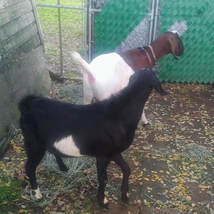 Petunia and Quizno on a Date Petunia and Quizno on a Date Breeding season is here and with it all the hope and stress of prepping for next year’s kidding season. Last year, our first year breeding, Petunia was our only goat to be bred. We did a driveway breeding with a local mini-nubian goat owner. One hour and a little gas money, and we had Petunia bred for triplets. This year, with our own buck on the job, I figured it would be a snap to time pregnancies so that Emma got a birthday kidding, and then about a month later our other does would kid. Kids earlier in the season would give us better size babies for showing at fair, and less problems with worms and coccidiosis in the spring/summer. For us this meant breeding in September and October. Well folks, it’s November and I do not have a single pregnant doe!! Initially in September, we had a series of weeks where all the does seemed to go into heat every 5-10 days. Apparently, sometimes at the beginning of the rut they can cycle really close together. When this happens they don’t always have an egg to fertilize. Usually after a few cycles they even out to the usual 17-21 days. So for September, when the girls didn’t get pregnant, I didn’t worry too much. In October, everyone’s heat cycles seemed to even out with the exception of Penelope who had an extended 7 day heat cycle mid October, but then went back into heat again and was bred at the end of October. Now we are into November and everyone is starting to cycle back AGAIN! 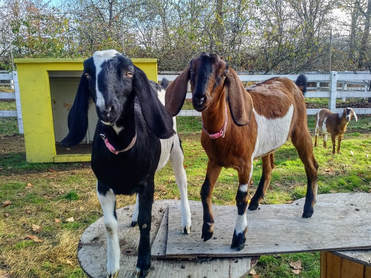 Playdate Playdate It is possible that the does are not ovulating, or that their fertility is low because of some type of nutritional deficiency. There is something called cystic ovaries that can cause infertility in does, but I believe all of my does are too young for this condition, and they don’t have the usual signs. I will give all the does BOSE to make sure that they are not selenium or vit E deficient. We have never copper bloused, and I do not see any sign of copper deficiency, but I will consider that in the future if we continue to have doe issues. I will also “flush” them, or, increase their nutrition slightly to make sure their bodies know there is enough nutrition to have babies. More likely, though, is that we have a problem with our buck. 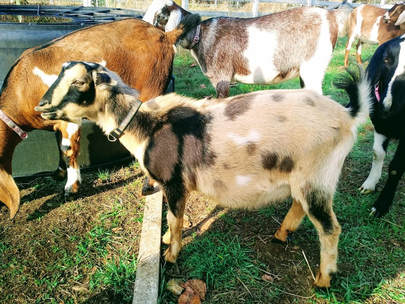 Tigger thinking buck thoughts Tigger thinking buck thoughts It is possible he is just a little too young. Nigerian bucks tend to be fertile by 3-4 months old, but Nubian bucks can take until 7-8 months old. Since he is 50/50, and shows a lot of Nigerian traits, I would think he would become fertile on the lower side of that age range, but it is possible in this one trait he is more like his Nubian genetics. He is 6 months old now in November. Another consideration is very rarely polled animals can be infertile, but this is most likely when they have had polled to polled breeding in their parentage, which our buck does not, so I consider this cause unlikely. If we continue to have issues, I will have him checked for this. For Tigger, I really think the situation is nutritionally based. When we got him he had a very rough coat and was small and thin. Through treatment for coccidiosis and supplementation we have largely corrected any nutritional concerns, however, the reproductive function is usually the last system to benefit when nutrition is improved. It is probably going to take more time. 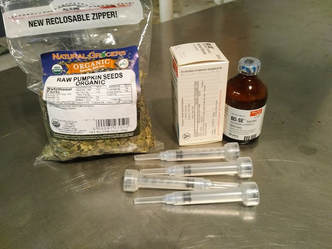 BOSE requires a vet prescription BOSE requires a vet prescription There are several minerals that are implicated in high quality sperm production. The most important of these are zinc and selenium. A BOSE shot will take care of the selenium. For zinc, I am supplementing pumpkin seeds and hemp seeds in his diet because I have these readily available to me. Whole roasted, unshelled pumpkin seeds contain about 3mg zinc per ounce, and shelled pumpkin seeds contains about 2.5mg per ounce. Pumpkin seeds are also high in vitamin E which works together with selenium. This time of year, slightly used pumpkins (Halloween, Thanksgiving) and pumpkin seeds are really cheap and easy to find and all the goats love them. I asked at work for my co-workers to bring me their pumpkin innards and pumpkin toss aways, and got a few great pumpkins and some slimy innards. The goats gobble these with great relish! 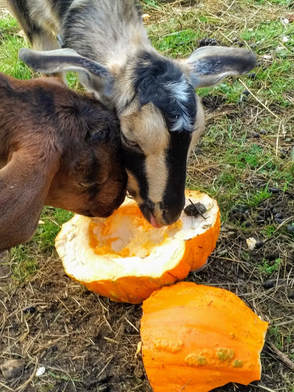 Hemp seeds contain approximately 5mg zinc, plus a lot of other awesome minerals in one ounce. I will pick up a few at the store for a top dressing sprinkle. Based on Tigger’s current size, I will give him about an ounce of pumpkin seeds and a sprinkle of hemp every day for the next 2 weeks, plus toss in some pumpkins for everyone. It takes about 49 days for a buck to grow mature sperm. If nutrition is indeed the cause, and these interventions fix the issue, I should be looking at a significantly increased quality by the end of December/early January. Hopefully that will be soon enough to catch the end of the rut season and still get babies by May! If you didn’t know already, I am here to inform you that goats melt like little wicked witches in the rain. Seriously! And we live in the Pacific North West where we have 3 months of beautiful, glorious sun, and 9 months of…well you guessed it, rain, rain, and more rain. Our property was once owned by horse people, and horses aren’t particularly concerned about wetness, so our fields and paddocks were set up without consideration of shelter from the elements. Last winter we had our goats in the paddock that our long-term plan is to use for our garden. We kept them there because that was the only field that had proper fencing, and, having just moved, we had far more pressing things to attend to than fencing another field. It had a little leaky lean to that was adequate for really rainy days to keep them dry. This summer I hired four 12-16 year old boys and over about 3 weeks they were able to fence a approximately ¾ acre field for us. The goats have been loving the extra space, but they have not had any shelter, and rather than listen to them scream until they get hoarse when it is wet, I have so far kept them in the barn on rainy days this fall. 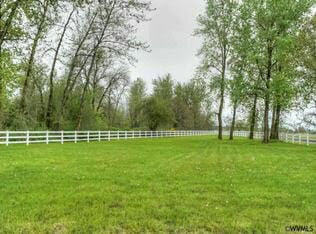 As long as goats are in good health they don’t really need much for shelter. They need something to keep the wet off, and if it is really cold, they need some nice warm bedding to nestle down in when they are resting. Since we put ours into the barn every night, we have the night-time-really-cold thing covered, but for day times in the field, we haven’t had a solution yet. I was delighted, therefore, when I found an ad on craigslist for some boxes being sold by the local senior center. They are a bit weather beaten, but still have several good years left in them. These boxes probably cost between $200-300 just in materials to build, and they were selling them for $95 each! So Josh figured out logistics, and we went to get one. The little old volunteer ladies were so sweet. They told us the price had dropped to half price, and only charged us $42. Then one of them came out to help. I naturally was not about to let her get her fragile hands, skin, or bones anywhere near the actual moving parts, so we asked her to watch and make sure our blocks on the wheels and tongue of the trailer didn’t slide (a stand to the side and out of the way job). It was super heavy, but with the help of some rollers, lifting straps and an extra guy (thanks, Dad!!), we were able to get one loaded into the trailer, strapped down and home. It will need a coat or 2 of paint to make sure it continues to hold up to the elements, and now the goats have a home away from home when the weather is damp! At first they ran away from it, but natural curiosity won out, and by the time I left to take Wyatt to wrestling practice this evening, they were all happily standing under shelter in the sprinkling dusk.
We live in the coolest place! As the weather cools, the mushrooms come back up again. We love this time of year! This weekend, while I worked, Josh took Emma and Wyatt up into the mountains to fish and look for mushrooms, and elderberries. The fish they were after were the Kokanee, and they had all swam up into the creeks to spawn where they were not legal to fish for. So no fish were caught. 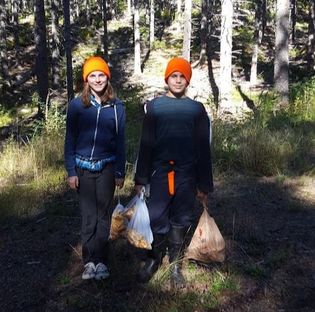 Luckily, the Chantrelles are up so they did not come home empty handed. Josh and the kids harvested about a gallon and a half. I am not the biggest Chantrelle fan ever, however Josh and the girls will literally fry up an entire pan of mushrooms and happily eat them by themselves with a little butter and Bragg Seasoning. 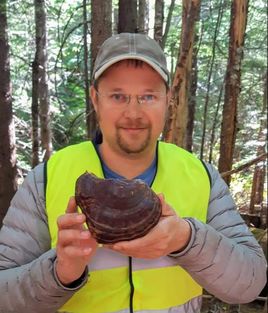 Much more exciting to me, they also found some Rishi type (we think ganoderma oregonense) mushrooms!! We have never found this mushroom before in the Cascades although we have been told they are there. Josh plans to take them to the Yachats mushroom festival this weekend to make sure of our ID. I can hardly wait to make medicine out of them! |
AuthorWrite something about yourself. No need to be fancy, just an overview. Archives
September 2020
Categories |
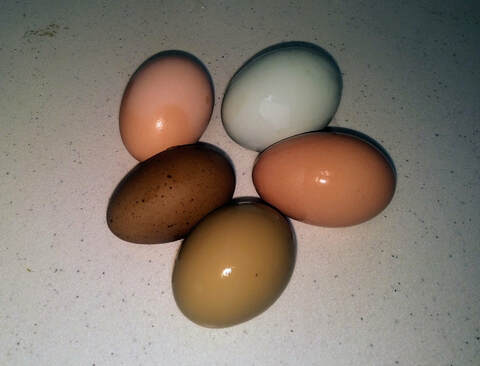
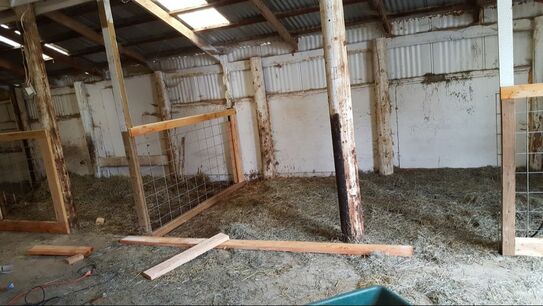
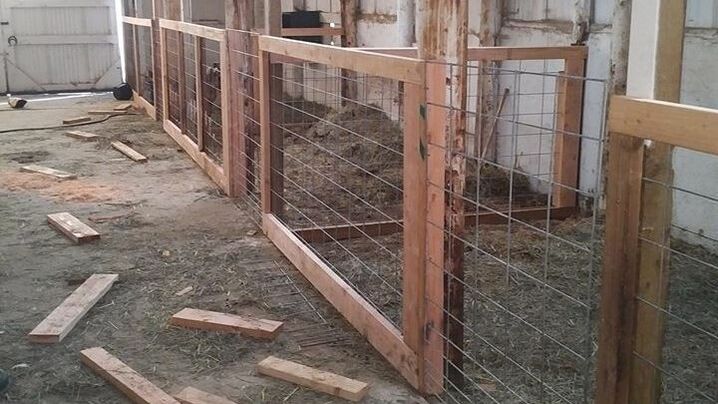
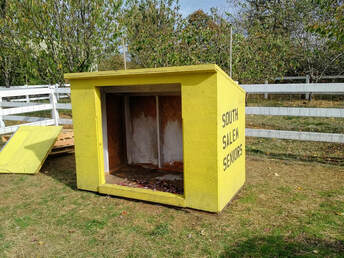
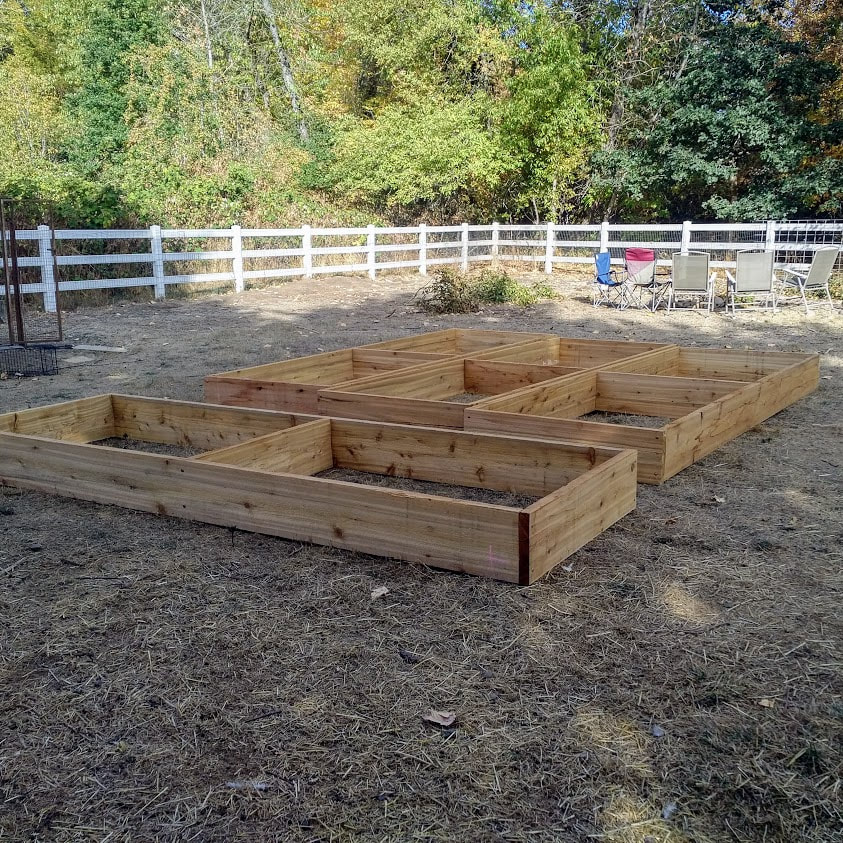
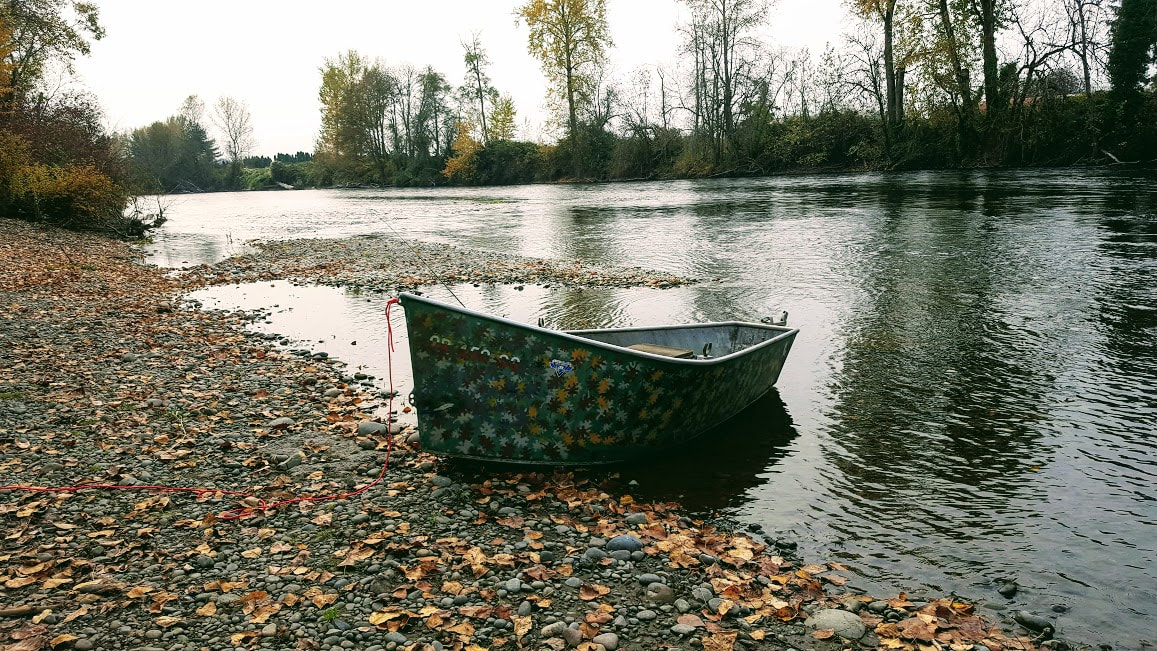
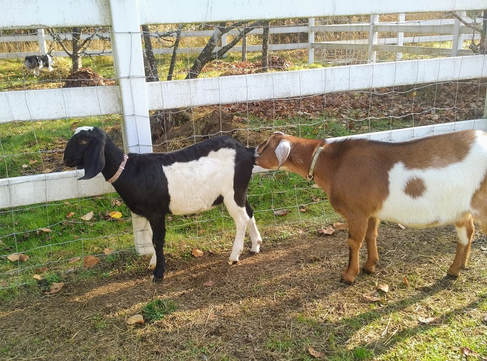
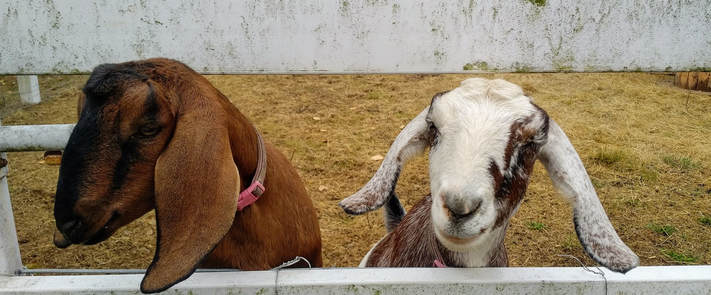
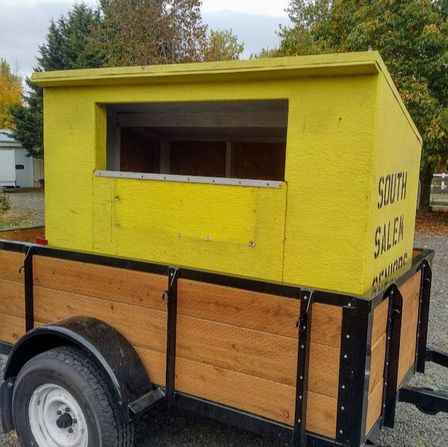
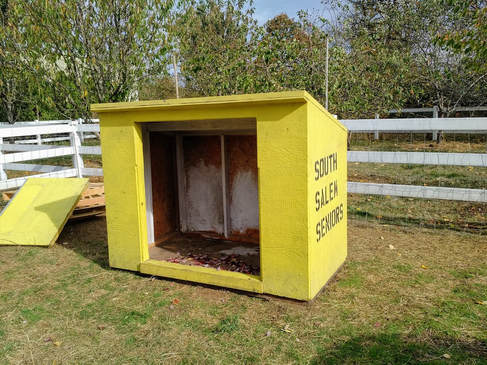

 RSS Feed
RSS Feed